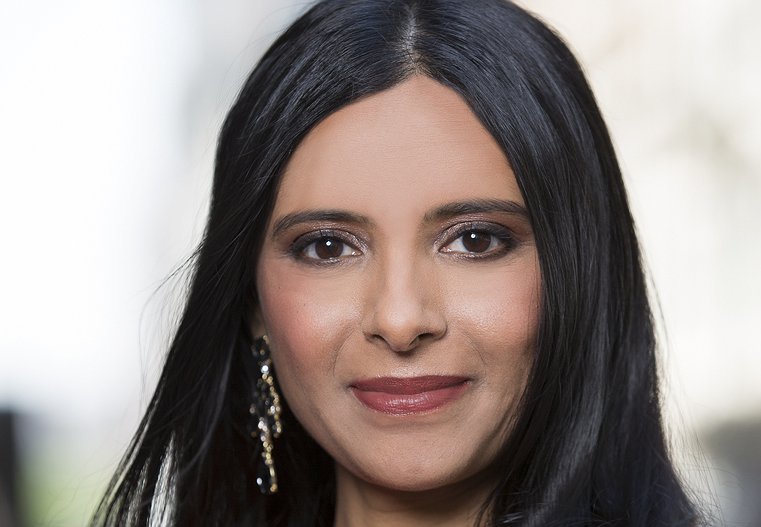 When I first interviewed
Radha Subramanyan in 2016, I described her as a "new breed of
researcher, easily navigating between the two worlds of 'classical'
research and the new discipline of data analytics." At the time, she was
president of insights, research, and data analytics at iHeartMedia. Now
that she has moved to television as chief research and analytics
officer at CBS, she is also one of the leading industry figures in forming data insights.
When I first interviewed
Radha Subramanyan in 2016, I described her as a "new breed of
researcher, easily navigating between the two worlds of 'classical'
research and the new discipline of data analytics." At the time, she was
president of insights, research, and data analytics at iHeartMedia. Now
that she has moved to television as chief research and analytics
officer at CBS, she is also one of the leading industry figures in forming data insights.Subramanyam helms CBS Research at a time when the parameters of television are rapidly changing and expanding. Video transcends platforms and inhabits new devices; audiences are shifting traditional habits and developing new behaviors and purchasing patterns; and data tracks it all, unleashing a torrent of information that is at once illuminating and confusing. How do we best use data to form a full storyline of the viewer and their journey?
According to Subramanyam, TV still reigns supreme as one of the most popular content platforms. "It is front and center in people's lives," she says. "There are more shows being produced today than ever before and people are consuming more hours of quality content and premium video than they ever have."
This programming bounty is resulting in more hours spent on media and accelerating the speed with which viewers conveniently fit more video into their day. "The acceleration of time-shifting continues. Consumers watch what they want, when they want," Subramanyam explains, adding that this is leading to a rise in OTT and other platform options. "Players are coming in and out. It continues to evolve rapidly."
In response to the intense need for quality content across the ecosystem, CBS is producing plenty of premium content for its own properties, while also developing and producing hit shows for other networks and the major streaming service. "CBS is producing 94 shows today, up 20 percent from last year and 120 percent from five years ago," she says.
Evolving Research to Maintain Programming Dominance
When it comes to the primary focal point of any initiative, "it always starts with content," Subramanyam says, "because without great content you have nothing."
But content alone is not enough, she notes. You also need insightful research that will reveal the network's challenges and opportunities, strengths and weaknesses. Under Subramanyam's leadership, CBS is among the first to blend big data, new technology, and traditional research to to complement the development of new shows.
"We have always had a great legacy and investment in insights around content; specifically, testing around shows and other forms of creative. That remains a top priority," she says. "We also use every possible classic research technique," from dial testing to focus groups and neuroscience, "and we are all-in on artificial intelligence and machine learning."
Conducting Marketing Research to Understand Attribution
In addition to being a program creator, CBS is also a marketing organization and Subramanyam's department conducts a range of marketing research projects. "We are doubling down in a way that we have never done before to understand our campaigns across TV, digital, and social," she explains. "And we're generating attribution, not just for our clients and partners, but also for ourselves in our own marketing campaigns." Her work in marketing extends to insights from data-driven ad sales campaigns, as well.
Subramanyam's department measures more than the spots and dots of advertising. Ad creative is also an important consideration. "We know that without great creative and great spots, we won't have great results," she says. "So, we A/B and A/B/C test all of our spots all of the time. We optimize the creative with clients." From there, it is possible to measure the KPIs, such as awareness and intent to view. Subramanyam believes that by tweaking creative, brands can understand the immediate impact of an ad or campaign.
Maximizing Content Success by the Platform
Is content platform-specific? For Subramanyam, some rules apply across all great shows. "You need great characters, strong narrative arcs, and great talent," she asserts. But there are differences between networks, where one show will resonate on one network and not on another, "which may require brand-level tweaking."
That is within the premium video space. Outside of premium video, such as in digital and social, there has to be a different set of attributes according to the platform. "Individual talent needs to speak differently on Twitter versus Facebook versus Instagram," Subramanyam says. "And we use data to suggest what works best for what platform."
Advice for the Next Generation
Subramanyam and I share a similar outlook regarding a career in research. We both highly recommend it to today's college students. "I find it deeply fulfilling as a profession and it is an honor and a privilege to represent the actual customer to a brand and be a voice for that customer," she explains.
What we both love is that research today is creative and scientific, using both sides of the brain. Plus, "you have to be extremely nimble, be willing to change and course-correct as needed, and always be open to learning radically new skills," Subramanyam advises.
Her parting words to today's college students: "If that sounds like you, the world is your oyster. We will need far more analytics and insights professionals in the future than we need today."
This article first appeared in www.MediaVillage.com


